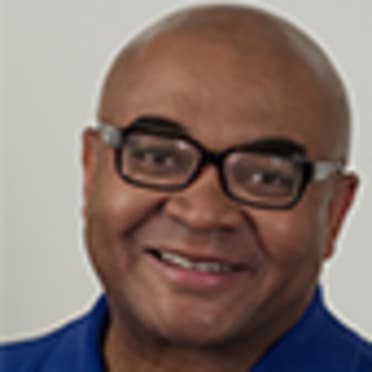SCOTTSDALE, Ariz. -- Colton Welker and Ryan Vilade are Rockies prospects who look the part.
Anyone wanting to grow up to slug at Coors Field should be sturdy and wide-shouldered. This spring they have swung with the force that could net big numbers in an extreme hitter-friendly environment. On Wednesday against the Padres, Welker lit up the exit velocity sensors at 103.4 mph on his home run.
As for the power in game competition, as Welker’s homer swing showed, it’s getting there. Welker ranks No. 11 and Vilade No. 4 on the Rockies Top 30 Prospects list, per MLB Pipeline. Both are making strong pushes to start the year in Triple-A, and seem to be sharing traits with homegrown All-Star power hitters in club annals.
Welker, 23, a fourth-round pick in 2016 out of Marjorie Stoneman Douglas High in Parkland, Fla., and Vilade, a second-rounder in 2017 (the Rockies didn’t have a first-rounder that year) from Stillwater High School in Oklahoma, are following the same development patterns of Rockies homegrown sluggers past. The solid hitting kicks in first, and the power arrives around the time they’re ready for the callup.
On the Rockies’ career home runs list, six of the top 11 were developed by the club’s Minor League system. Listed are their Rockies totals and their Minor League single-year highs.
- Todd Helton, 369 Rockies homers, Minor League high 16 (1997)
- Nolan Arenado, 235, 20 (2011)
- Troy Tulowitzki, 188, 13 (2006)
- Charlie Blackmon, 178, 11 (2010)
- Trevor Story, 134, 20 (2015)
- Matt Holliday, 130, 16 (1999)
Welker, who likely would have begun 2020 repeating the Double-A level, has a career high of 13 in 2018 at Class A Advanced Lancaster. Vilade, also likely ticketed for Double-A last year, hit 12 in 2019 at Lancaster. Of course, the pandemic robbed both of a 2020 season’s worth of Minor League homers.
But if their development goes as expected, both could be headed for careers with power numbers where it truly counts.
“Those guys are capable of hitting homers,” Rockies manager Bud Black said. “They’re still young. They haven’t proven -- maybe in the Minor Leagues -- the real, consistent season of power, but it’s in there.
“That can show up anytime, whether it shows up quickly as they climb the Minor League ladder or if it shows up quickly in the big leagues. Sometimes it shows up a little later as they mature as Major League players.”
Going into Thursday’s game against the Cubs, Welker was showing signs of the traits that can predict power, even if the home run totals haven’t risen. Welker was 7-for-16 (.438) with three doubles and a homer, for an .813 slugging percentage. Vilade was 4-for-11 (.364) with two walks, for a .462 on-base percentage.
Both were invited to last year’s alternate training site. Welker, drafted as a third baseman, worked on his agility at third and first base, and continued to chisel his frame (listed at 6-foot-1, 235 pounds). Vilade, an infielder in high school who kept growing (listed at 6-foot-2, 226), continued a transition to the outfield, where he moves quickly and comfortably.
Both bought into the notion that developing a solid hitting approach is a must -- even if it means power numbers have to wait.
After batting .333 at Lancaster in 2018, Welker spent the next year as one of the younger Double-A players and saw his average drop to .252 in 98 games. He tried to manufacture some launch angle into his swing, which created some problems. Still, he showed a healthy enough eye to draw 32 walks. Last spring before the shutdown, his swing was sound and pleasing to the eyes of the Rockies’ brass and scouts for opposing teams.
“A lot of power hitters know how to barrel the baseball as well as drive a baseball,” Welker said. “I feel very close. I think I can perform at this level and my preparation before the games is becoming big-league ready. My mental state is there, too.”
Vilade, whose father, James Vilade, scouts for the Marlins, was not new to solid hitting principles. He batted .274 but with a .353 OBP in 2018 at Class A Asheville (his first year in a full-season league) and produced an encouraging slash line the next year at Lancaster, .303/.367/.466.
“People will say I should hit more homers than I do,” Vilade said. “In my eyes, it’s just I’m going to go up there and have the same approach. I say hitters don’t hit home runs. Pitchers throw them. When they throw a pitch I can do damage with, I’m going to do it. But I’m going to stay in the gaps, and the homers will come.”
Last year’s alternate training site featured the monotony of facing the same pitchers in the mornings. But being in Denver made them feel that much closer to the big league team that’s their goal.
“You could directly reflect,” Welker said. “You play a game at 10 a.m. Then you get home, turn on the TV and you’ve got Trevor Story, Charlie Blackmon and these guys swinging the bat in the same field that you were just on, getting your work.”
Vilade said, “It gave you that motivation not to be the group up early in the morning, practicing. You want to be with the team at night.”
